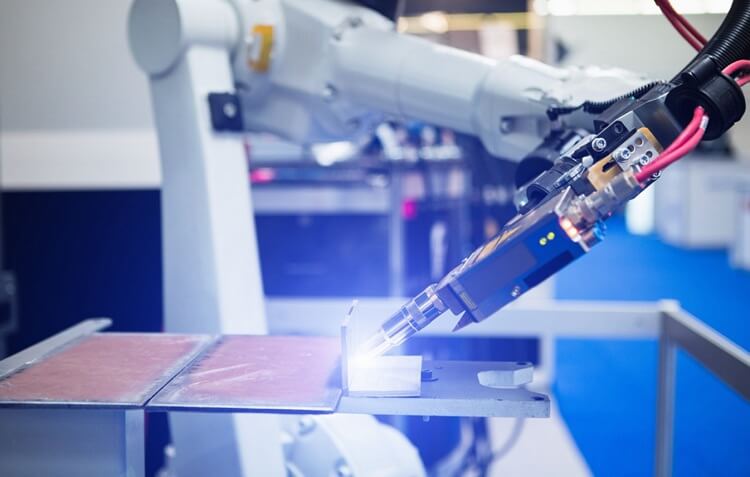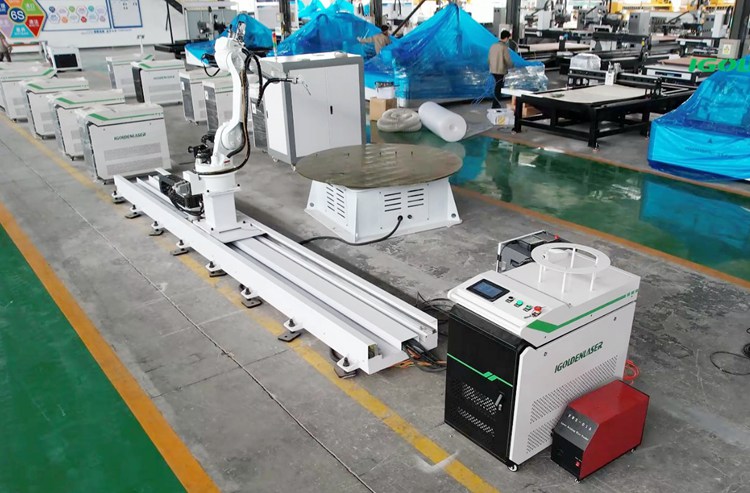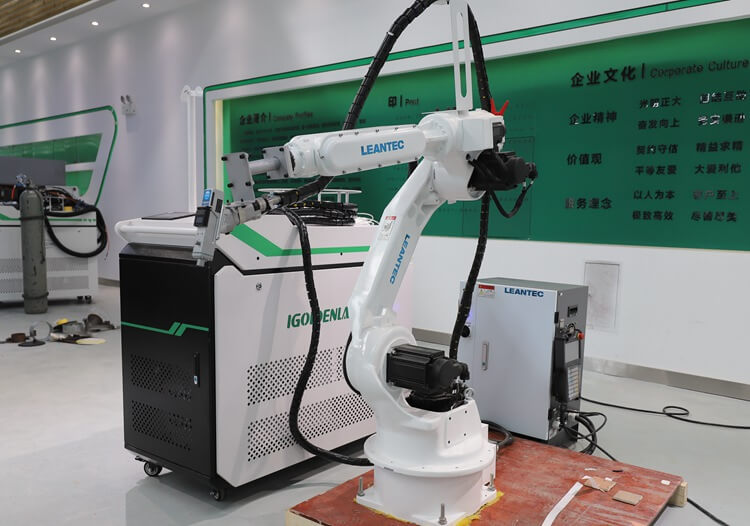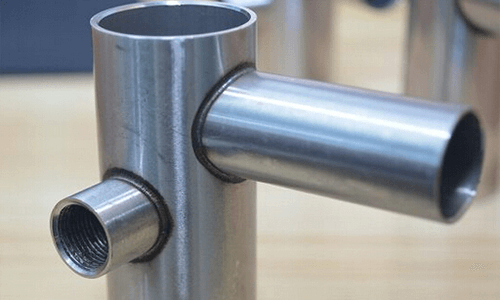Robotic laser welding is a revolutionary technology that has transformed precision joining in manufacturing. Its precision, speed, versatility, and automation capabilities make it an invaluable tool in various industries, from automotive and aerospace to electronics and medical device manufacturing. By harnessing the power of lasers and robotics, manufacturers can achieve stronger welds, increased productivity, and improved quality control. As the manufacturing industry continues to evolve, robotic laser welding will undoubtedly play a crucial role in shaping its future.

Robotic Laser Welding
Robotic laser welding is a process that utilizes a high-powered laser beam to join two or more pieces of metal together. The laser beam is controlled by a robotic arm, which precisely directs the beam to the desired welding location. The intense heat generated by the laser beam melts and fuses the metal, creating a strong and durable weld joint. This technology offers numerous advantages over traditional welding methods, making it a preferred choice in various industries.


In the world of manufacturing, precision and efficiency are paramount. One technology that has emerged as a game-changer in achieving these goals is robotic laser welding. This advanced technique combines the precision of lasers with the versatility of robotic systems to create strong and reliable welds.
Applications of Robotic Laser Welding
- Automotive Industry: Robotic laser welding machine is extensively used in the automotive industry for joining various components, including body panels, chassis, and exhaust systems. The precise and high-speed welding capabilities of robotic laser systems contribute to the production of structurally sound and aesthetically pleasing vehicles.
- Aerospace Industry: The aerospace industry demands the highest levels of precision and quality. Robotic laser welding plays a crucial role in manufacturing aircraft components, such as engine parts, turbine blades, and fuel tanks. The ability to weld complex geometries and dissimilar materials makes robotic laser welding an invaluable technology in aerospace manufacturing.
- Electronics and Microelectronics: Robotic laser welding is widely utilized in the electronics industry for joining delicate components, such as circuit boards, sensors, and connectors. The precise control of the laser beam allows for micro-welding of tiny components with minimal heat transfer, ensuring the integrity of sensitive electronic devices.
- Medical Device Manufacturing: The medical device industry requires precise and reliable welding for the production of implants, surgical instruments, and medical equipment. Robotic laser welding provides the necessary precision and control to create strong and biocompatible welds in medical devices, contributing to patient safety and well-being.
- Metal Fabrication and Heavy Machinery: Robotic laser welding is employed in metal fabrication and heavy machinery manufacturing for joining large and thick metal components. The high-power laser beams can penetrate and weld thick materials with ease, resulting in strong and durable welds for heavy-duty applications.


Advantages of Robotic Laser Welding
- Precision and Accuracy: Robotic laser welding offers unparalleled precision and accuracy. The robotic arm can precisely control the position, speed, and intensity of the laser beam, resulting in consistent and high-quality welds. This level of precision is especially crucial in industries such as aerospace, automotive, and electronics, where even the smallest deviations can have significant consequences.
- Speed and Efficiency: Robotic laser welding is a highly efficient process. The automated nature of the robotic system allows for fast and continuous welding, reducing production time and increasing overall productivity. Additionally, the laser beam’s concentrated heat source enables rapid heating and cooling, further enhancing the speed of the welding process.
- Versatility: Robotic laser welding is a versatile technology that can be used to join a wide range of materials, including metals and alloys. It is suitable for welding thin and delicate materials, as well as thick and heavy components. This versatility makes it ideal for various applications, from micro-welding delicate electronic components to heavy-duty welding in automotive manufacturing.
- Reduced Distortion and Heat-Affected Zone: The localized heat input of the laser beam minimizes distortion and the size of the heat-affected zone (HAZ) compared to traditional welding methods. This is particularly beneficial when working with heat-sensitive materials or components that require minimal distortion, ensuring the structural integrity of the welded parts.
- Automation and Safety: Robotic laser welding eliminates the need for manual labor, reducing the risk of human error and improving workplace safety. The robotic system can perform repetitive welding tasks with precision and consistency, freeing up human operators for more complex and critical tasks. Additionally, the enclosed laser welding systems provide a controlled environment, minimizing exposure to harmful fumes and radiation.
Frequently Asked Questions (FAQ)
1. Is robotic laser welding suitable for all types of metals?
Robotic laser welding is compatible with a wide range of metals and alloys, including stainless steel, aluminum, titanium, and more. However, the specific properties of the metal, such as reflectivity and thermal conductivity, may influence the welding process parameters and feasibility.
2. Can robotic laser welding be used for non-metallic materials?
Robotic laser welding is primarily used for joining metal components. However, there are laser welding techniques available for certain non-metallic materials, such as plastics and polymers. These techniques utilize lasers with specific wavelengths that can be absorbed by the non-metallic materials, allowing for effective welding.
3. How does robotic laser welding compare to traditional welding methods?
Robotic laser welding offers several advantages over traditional welding methods. It provides higher precision, faster welding speeds, reduced distortion, and a smaller heat-affected zone. Additionally, robotic laser welding is automated, improving efficiency and workplace safety.
4. Are there any limitations to robotic laser welding?
While robot laser welding is a versatile and efficient technology, it does have some limitations. It may not be suitable for certain materials with high reflectivity or low absorption of laser energy.
5. How can robotic laser welding contribute to cost savings in manufacturing?
Robotic laser welding can lead to cost savings in manufacturing through increased productivity, reduced labor costs, and improved quality control.

IGOLDEN BLOG
Thank you for visiting the iGOLDENCNC website. iGOLDENCNC is the professional supplier of CNC machinery application solution, within the business of producing and selling CNC machinery and accessories.